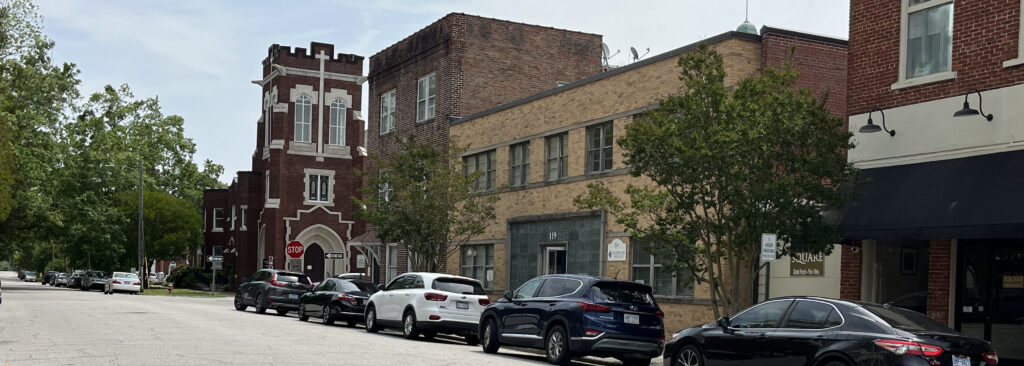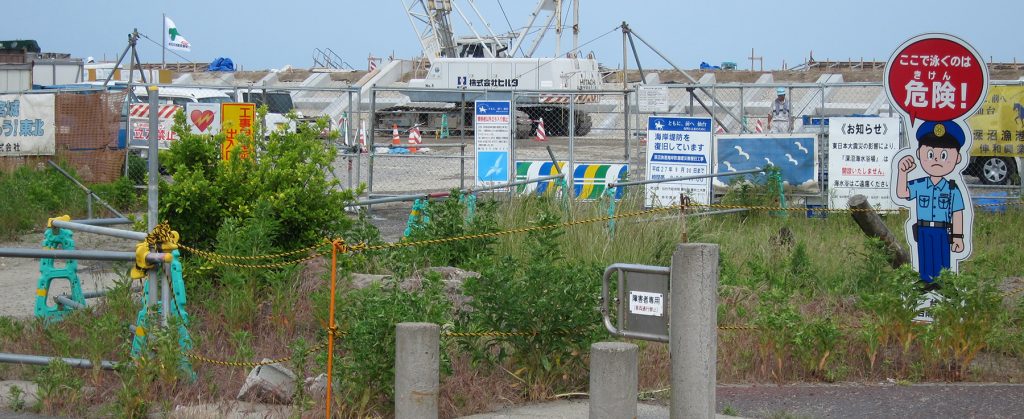Intended and unintended consequences of buyout programs.

Funding: National Oceanic and Atmospheric Administration Grant, 2022 to 2024
Status: On Going
Research Team:
– Principal Investigator: Anuradha Mukherji, Associate Professor of Community and Regional Planning, East Carolina University (ECU)
– Co-Principal Investigator: Meghan Millea, Professor of Economics, ECU
– Co-Principal Investigator: Scott Curtis, Dr. John Lining Professor of Physics, The Citadel
– Co-Principal Investigator: Jamie Kruse, Distinguished Professor of Economics, ECU
– Collaborator: Jennifer Helgeson, Research Economist, National Institute of Standards and Technology
The Research
A collaborative research project with multiple faculty from ECU’s Center for Natural Hazards Research (CNHR), The Citadel, and the National Institute of Standards and Technology (NIST), this study examines the intended and unintended consequences of buyout programs as an adaptive response to compound flood events and coastal inundation risk in rural communities. The project is funded by the National Oceanic and Atmospheric Administration (NOAA) through the Climate Program Office’s Adaptation Sciences (AdSCi) Program. The study will look at the full impact of buyout programs in two rural communities in the Carolinas applying mixed methods to capture the benefits and costs of this adaptation strategy while addressing the fiscal and equity challenges.
Preparing for, responding to, and mitigating compound coastal water hazards for resilient rural communities.

Funding: National Oceanic and Atmospheric Administration Grant ($299,563), 2019 to 2023
Status: Concluded
Research Team:
– Principal Investigator: Scott Curtis, Dr. John Lining Professor of Physics, The Citadel
– Co-Principal Investigator: Anuradha Mukherji, Associate Professor of Community and Regional Planning, East Carolina University (ECU)
– Co-Principal Investigator: Jamie Kruse, Distinguished Professor of Economics, ECU
– Co-Principal Investigator: Ausmita Ghosh, Assistant Professor of Economics, ECU
– Collaborator: Jennifer Helgeson, Research Economist, National Institute of Standards and Technology
The Research
A collaborative research project with multiple faculty from ECU’s Center for Natural Hazards Research (CNHR), The Citadel, and the National Institute of Standards and Technology (NIST), this study examines risks, impacts, challenges, and the mitigation of compound coastal water hazards in eastern North Carolina (ENC). Coastal estuarine environments are susceptible to a combination of multiple water hazards that are concurrent or sequential, often storm-related, and contribute to societal, economic, and health risks. These have been defined as compound events. The team worked closely with the Mid-East Commission and the Albemarle Commission for the study.
Relevant Publications
Mukherji, A., Adeniji, K.A., Curtis, S., Helgeson, J., Kruse, J. K. & Millea, M. (2024). Buyout programme experiences and perspectives of local public officials in eastern North Carolina. Environmental Hazards. DOI: https://doi.org/10.1080/17477891.2023.2299371
Mukherji, A., Adeniji, K.A., Curtis, S., Helgeson, J., Kruse, J. K. & Ghosh, A. (2023). Perspectives of local public officials on the health hazards of compound flooding in Eastern North Carolina. SSM-Qualitative Research in Health. DOI: https://doi.org/10.1016/j.ssmqr.2023.100359
Curtis, S., Mukherji, A., Kruse, J.K., Ghosh, A., & Helgeson, J. (2023). Compound Flooding on the Rise in Eastern North Carolina: Risk, Impacts, Challenges and Policy Directions. Summary Report. East Carolina University: Greenville, NC
Mukherji, A., Curtis, S., Helgeson, J., Kruse, J.K., & Ghosh, A. (2023). Mitigating compound coastal water hazards in eastern North Carolina. Journal of Environmental Planning and Management, 67(8). DOI: https://doi.org/10.1080/09640568.2023.2183112
Curtis, S., Mukherji, A., Kruse, J.K., Helgeson, J., & Ghosh, A. (2023). Perceptions of risk to compound coastal water events: A case study in eastern North Carolina, USA. Progress in Disaster Science, 16: 100266. DOI: https://doi.org/10.1016/j.pdisas.2022.100266
Curtis, S., DePolt, K., Kruse, J. K., Mukherji, A., Helgeson, J., Ghosh, A., & Van Wagoner, P. (2021). Spatially compounded surge events: An example from hurricanes Matthew and Florence. Natural Hazards and Earth System Sciences, 21: 1759-1767. DOI: https://doi.org/10.5194/nhess-21-1759-2021
Adaptation and Recovery Through Land-Use Change in Tohoku, Japan

Funding: Abe Fellowship, Funded by the Japan Foundation Center for Global Partnership in Collaboration with the Social Science Research Council
Status: Ongoing
The Research
This study examines how coastal communities (e.g. municipalities) in Tohoku, Japan have employed land-use change adaptation strategies following the 2011 Tohoku earthquake and tsunami to adapt to coastal land subsidence and subsequent sea-level rise. In doing so, the long-term research goal is to advance scholarship on local community-based adaptation mechanisms that are employed to strengthen resilience to hazards in general. The study seeks to advance knowledge and understanding of long-term local adaptation, specifically during disaster recovery, by examining land-use change strategies being negotiated in Tohoku, Japan to adapt to coastal land subsidence and sea-level rise.
Relevant Publications
Book Manuscript (In Preparation): Mukherji, A. Land use reorganization after 3.11 in Japan.
Mukherji, A., Ganapati, N.E., Manandhar, B. (2020). Panacea or problem: New governance structures for disaster recovery. International Journal of Disaster Risk Reduction, 52. DOI: https://doi.org/10.1016/j.ijdrr.2020.101960
Mukherji, A., Ganapati, N.E., Rahill, G.J. (2014). Expecting the unexpected: Field research in post-disaster settings. Natural Hazards, 73(2): 805-828. DOI: https://doi.org/10.1007/s11069-014-1105-8